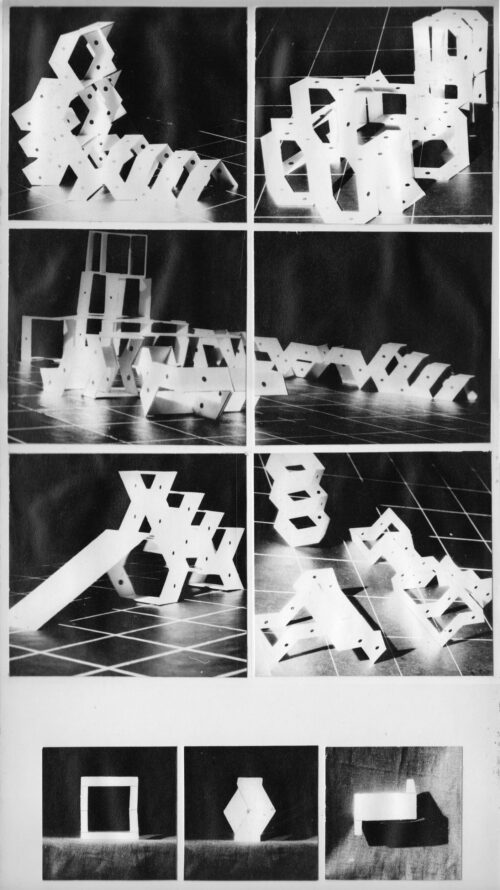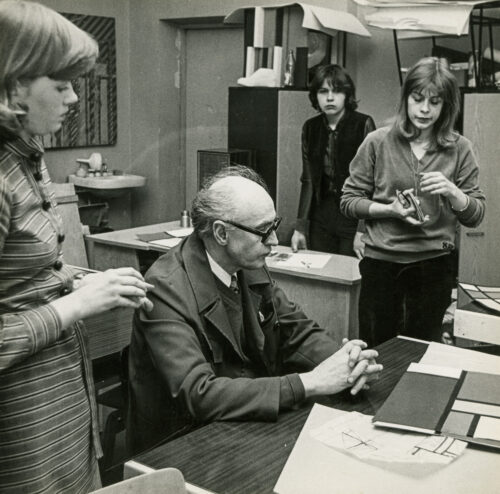Faculty of Industrial Art at the Estonian State Art Institute, Tallinn
In 1966, the State Art Institute of the Estonian SSR [Eesti NSV Riiklik Kunstiinstituut, or ERKI] introduced a new course of study to train artists for industry. Two years later, this became an independent Faculty of Industrial Art with the interior designer Bruno Tomberg (1925–2021) as its first director. Inspired by innovative twentieth-century design schools like the Bauhaus and the Ulm School of Design, its curriculum included computer science, sociology, and ergonomics, in addition to the traditional art courses. The charismatic Tomberg strove to cultivate future professionals with a broad range of knowledge who would be familiar with both the specifics of industrially produced forms and the problems of contemporary society. In Tomberg’s mind, design was a means to solve not only formal but also social problems.
At the core of the curriculum was architectonics, based on the study of structures in terms of balance, rhythm, and sequence, as well as the interaction of shapes and colours. Starting with a two-dimensional sheet, ‘potential solutions were translated into spatial relationships’. Built on combinatorics, this course was designed to cultivate a sense of pictorial language and space, and to ‘develop the student’s individual creative abilities in the application of objective regularities in artistic composition’. Here the ‘objective laws’ were understood to be visual mass, colours, and shapes, which, like the letters of the alphabet, could be endlessly combined to create different visual and spatial experiences.

